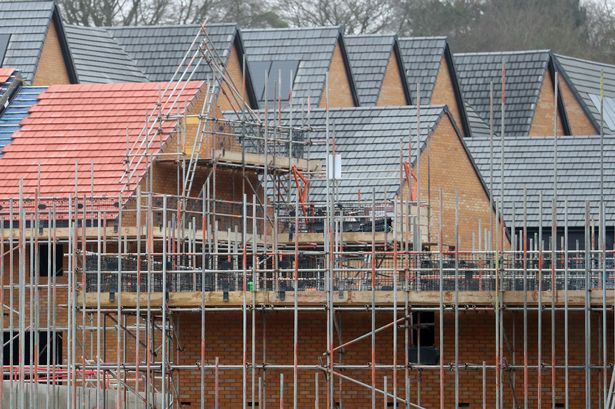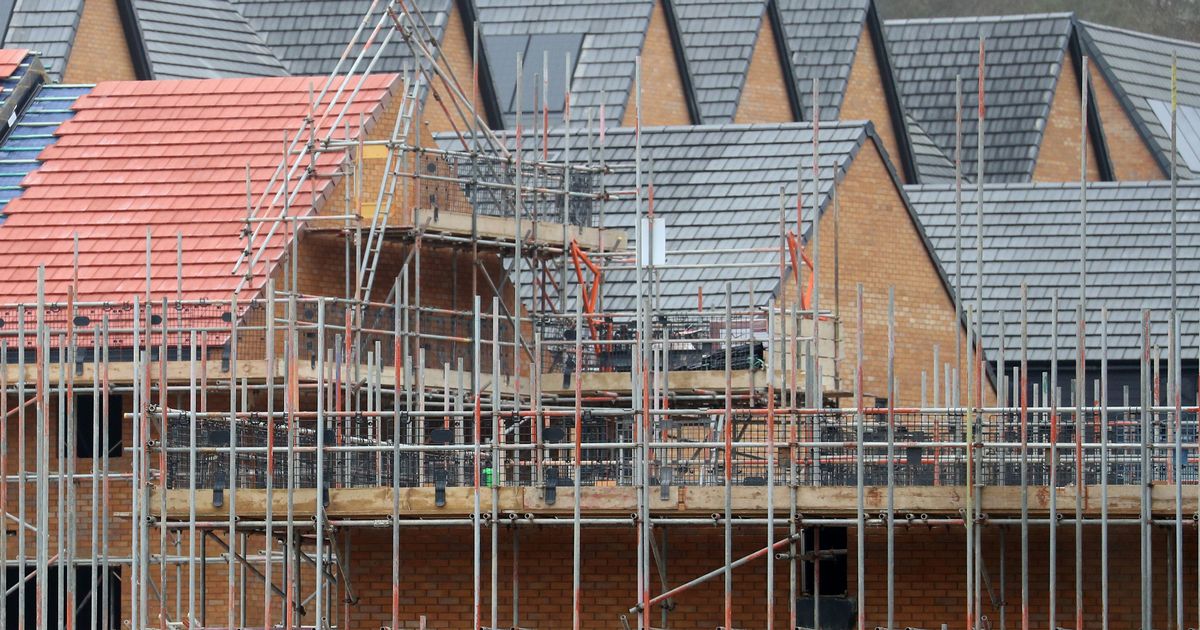Our interactive map shows how many are scheduled to be built in each council area The construction is scheduled to begin by 2028(Image: Andrew Matthews/PA Wire)
The construction is scheduled to begin by 2028(Image: Andrew Matthews/PA Wire)
Northern Ireland is set to see a significant increase in social housing with plans for 8,164 new social homes to be constructed across various council areas over the next three years, according to the latest details from the Department for Communities.
Responding to Assembly Written Question from TUV MLA Timothy Gaston, Communities Minister Gordon Lyons confirmed that the overall target for new build social homes under construction during the Programme for Government 2024-2027 is 5,850.
However, the Social Housing Development Programme (SHDP) for 2025/26 – 2027/28 outlines a more extensive plan to start 6,660 social housing units. This comes on the heels of 1,504 units that commenced construction in 2024/25, bringing the total proposed units to 8,164.
This comes after last month, MLAs were informed that the Department for Communities were set to fund less than half the number of social homes it had pledged to start construction on this year. Communities Minister Gordon Lyons said a proposed capital budget allocation of £63 million would facilitate work on between 900-1,000 new build social homes, short of the 2,000 a year target.
Belfast is earmarked for the largest share of new social housing, with a total of 2,326 units programmed. This includes 359 units that started in 2024/25, followed by substantial programmed starts of 1,078 in 2025/26, 524 in 2026/27, and 365 in 2027/28.
Derry and Strabane also features prominently in the plans, with a combined total of 2,100 units. The district saw 247 units commence in 2024/25, and is scheduled for 487 starts in 2025/26, 877 in 2026/27, and 489 in 2027/28.
Other notable allocations include Antrim and Newtownabbey with 573 units, and Lisburn and Castlereagh with 694 units. Armagh Banbridge and Craigavon is set for 320 units, while Newry Mourne and Down will see 378 units.
Some of the largest proposed projects include 300 units built over two phases at Moores Land in Derry, 258 units as part of phase two of the Springtown Road development in Derry and 208 homes in a mix of social and private housing on the Glen Road and Hannahstown in West Belfast. A full list of the proposed developments can be accessed here.
It is important to note that while these figures represent programmed starts, the Department for Communities highlights that “programmed schemes can be lost or slip to future programme years for a variety of reasons e.g. relating to delays in acquiring sites and/or failure to secure Planning Approval.” Conversely, “additional schemes can also be added to the SHDP ‘in-year’ through Competitive Land, Design and Build procurement route and/or the purchase of Existing Satisfactory/Off-the-Shelf properties.”
Over the past five years (2020/21 to 2024/25), a total of 6,401 social homes have been built across Northern Ireland. The majority of these completions have been 2-bedroom (3,684 units) and 3-bedroom (1,598 units) homes, with a smaller number of 1-bedroom (897 units), 4-bedroom (197 units), and shared units (25 units).
Figures released last month show that since December 2019, the total number of applicant households on the Social Housing Waiting List has ballooned by over 26 per cent, from 38,308 to a staggering 48,325 by December 2024. The impact of this surging demand is acutely felt in the time people are forced to wait for a home. The mean (average) waiting time has climbed from 41.0 months (just over 3 years and 5 months) in December 2019 to a troubling 50.0 months (4 years and 2 months) by December 2024.
Even more concerning is the median waiting time, which has jumped from 23.0 months to 33.0 months over the same period. This indicates that longer waits are not just affecting a few extreme cases but are becoming the widespread experience for the majority of applicants.
Belfast City Council remains the epicentre of the social housing crisis. By December 2024, it accounted for over a quarter of all applicants in Northern Ireland, with 13,197 households on its waiting list. Predictably, Belfast also records some of the highest waiting times, with a mean of 54.0 months and a median of 37.0 months.
Breaking this down further, NIHE offices like South and East Belfast are managing thousands of these cases, with West Belfast consistently showing some of the longest individual office waiting times (57.6 months mean, 38.0 months median as of December 2024).
However, the data reveals that Newry, Mourne and Down District Council is now experiencing the longest average waiting times in Northern Ireland, with a mean of 57 months and a median of 42 months by December 2024. This points to severe bottlenecks or a critical shortage of suitable housing in this area, even if its overall applicant numbers (3,953) are not the highest in the region. The Newry NIHE local office reflects this, showing consistently high waiting times.
Derry City and Strabane District Council also faces acute challenges, with the second-highest number of households on the waiting list at 6,253 by December 2024, and elevated waiting times (mean of 51.9 months, median of 34.0 months).
For all the latest news, visit the Belfast Live homepage here and sign up to our daily newsletter here.
